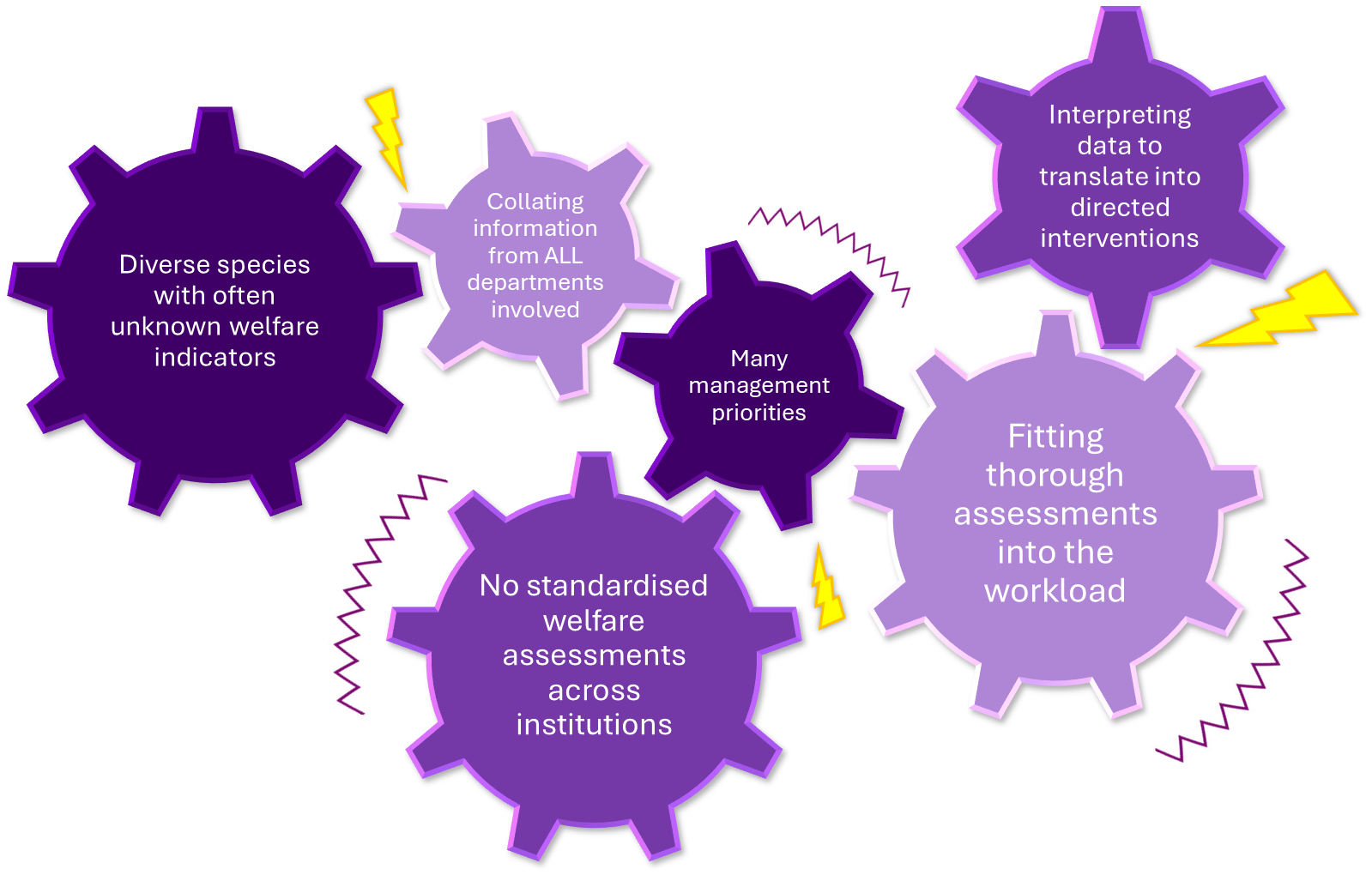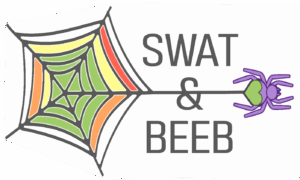Tools to assess animal welfare
We have developed two tools: the Standardised Welfare Assessment Tool (SWAT) and the Behaviour and Environment Evidence Base (BEEB). These tools are designed to help captive animal carers take a standardised, evidence-based approach to animal welfare assessment and facilitate collaborative research within the captive animal community.
Standardised Welfare Assessment Tool (SWAT)
The SWAT is a questionnaire with 50 questions addressing the four functional domains of the Five Domains of Animal Welfare: Health, Nutrition, Environment and Behavioural Interaction. The questions have been validated through research and were modified throughout a piloting process to make them more direct, less ambiguous and more informative. The questions are designed to apply to any animal and assess both resource inputs and animal outputs. The tool provides visual representations of assessment outcomes to allow easier interpretation for creating action plans.
Behaviour and Environment Evidence Base (BEEB)
The BEEB is a suite of resources for taking an evidence-based approach to the behaviour and some of the environment questions in the SWAT. The foundation of this suite of tools are ethograms that include behaviours specifically relevant to welfare made for taxon groups covering all species kept in captivity. The remaining tools are resources that make the ethograms more easily usable, make data collection reliable, and the resulting data more easily analysed.
Why these tools were created
In the last decades, there has been a surge of attention paid to the welfare of captive animals. As a society, our threshold for what constitutes good welfare in captive species has greatly increased. With these progressing ideas of welfare, so have the standards and practices for promoting positive welfare for captive species.
However, to nurture positive welfare, we first need to accurately assess welfare states. This assessment process, though rapidly developing across captive animal sectors, is still challenging.
We have created these tools as a response to address some of the most common difficulties of assessing welfare for captive animals:

How the tools can be used
The tools are designed to be flexible in their use. The SWAT and BEEB can be used in conjunction to provide a fully-fledged welfare assessment program with an evidence-based approach. However, they can also be used for the following purposes:
- Evidence-based welfare assessment program
- Behavioural and environmental data to supplement an existing welfare program
- Assists with evidence for zoo inspections
- Deeper investigation into flagged welfare concerns
- Evidence for end-of-life decisions
- Collaborative behavioural research across institutions housing the same species
- Long-term data collection to establish baselines of circadian and circannual behavioural cycles for comparison in welfare assessments
- The website can also be used as a collaborative space among institutions to generate species-specific ethograms for all captive species
